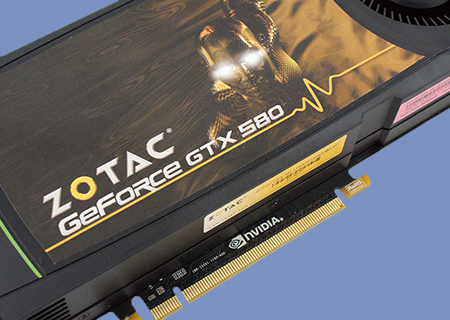Zotac GTX580 Review
Test Setup
For our testing we’re going to run the GTX580 against the reference GTX480 to see how well nVidia have improved their reference design, but also against the best of the GTX480s, the MSI GTX480 Lightning.
We could put it up against things like the GTX470, or HD5850 to try and pad out the graphs and force you to click through endless pages, but what’s the point? We all know this is the single-GPU weapon of choice, so that’s what we’ll compare it to. We will save any comparisons to the high-end AMD cards until the HD69xx cards are released and then we will revisit.
Zotac GTX580
ASUS Rampage III Extreme
Intel i7 950 @ 4GHz
6GB Mushkin Redline RAM
Corsair AX1200 PSU
Noctua NH-D14
Windows 7 Ultimate 64-bit
Onwards.
Overclocking
The main problem of the previous card was how hot it was and how crippled it had to be compared to the design specifications. This meant that reference designs were almost entirely un-overclockable and it wasn’t until we saw the MSI Lightning recently that a version appeared that had some overhead.
Thankfully as proof of the leap forward the GTX580 is over its Dad the GTX480 has a fair bit of room available to overclock and we managed to squeeze an extra 60MHz core speed out of it over the stock. Which is already 75MHz faster than the stock GTX480.
Temperatures
Of course this is really where the money is made, the bread buttered, and other metaphorical comments. Heat was the killer of the GTX480. nVidia have taken two steps to resolve this. Firstly of course is the change in the architecture and heatsink. Secondly though is slightly clever and/or sneaky. If we need to run a card to its knees we use FurMark. Most people do. nVidia know this and have played about so if the card knows that you’re running a torture test, it underclocks the card to keep everything cool and within power-limits.
So if you were the type of site who only did that, then you’d imagine this is a very very cool card indeed as our graph below shows. Of course we also know that Crysis Warhead runs the GPU at 99% all the time and nVidia say that gaming performance isn’t affected. It certainly doesn’t detune the card at any rate because within five minutes we were rapidly heading towards 100°C.
In a lot of ways this could be disappointing, but it’s not as bad as it seems. Firstly the card actually keeps going, whereas the GTX480 keeled over at every opportunity. Secondly, and to us as importantly, the card is quiet. Those GTX285 looks aren’t misleading because the GTX580 is as quiet as a GTX285 was. Cue lots of gasps from the audience.



